
Darkness fell at the Nürburgring – and so did the rain. Rain so hard that even this race – the toughest of the tough – had to be called to a temporary halt because of the absolutely appalling conditions.
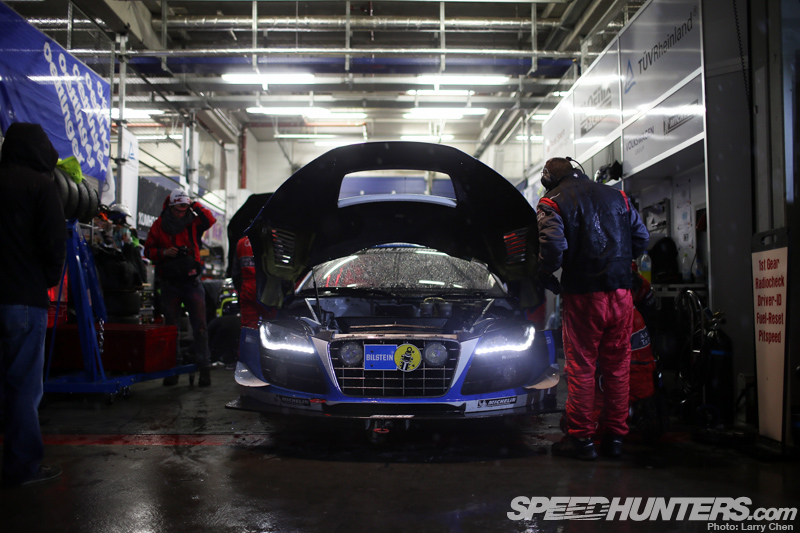
Driving on the Nordschleife in the dry is hard enough, but with a track better described as a river, and fog so thick you can’t see the brake lights of the car in front, it’s potentially lethal. A red flag was the only option.
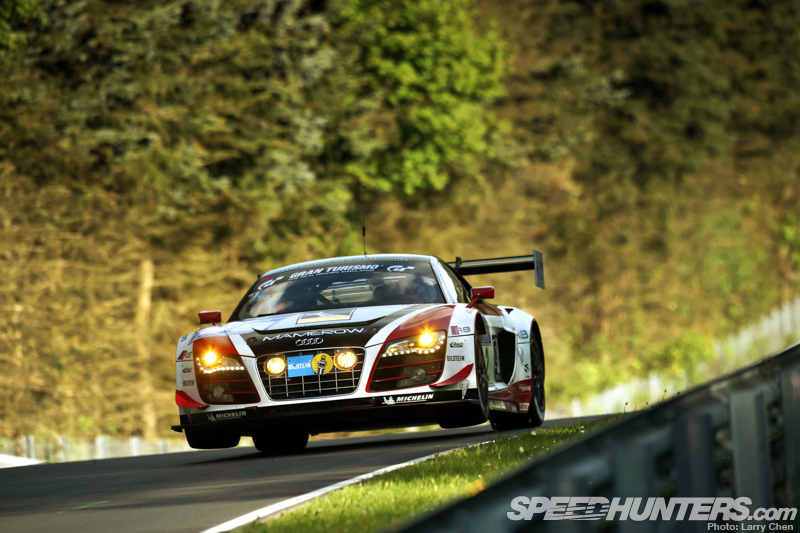
The multiple massed rolling starts for the 176 entrants of the 2013 ADAC Zurich Nürburgring 24 Hours were held at 5pm on Sunday local time – very late in the day and almost as daylight was beginning to fade. The race had been well under way before the stoppage, and as exciting as ever right from the off.

The top GT3 cars had been slugging it out up front, changing position lap after lap, and it was the same all through the 20 classes (21? 19? 50? There are a lot anyway!)
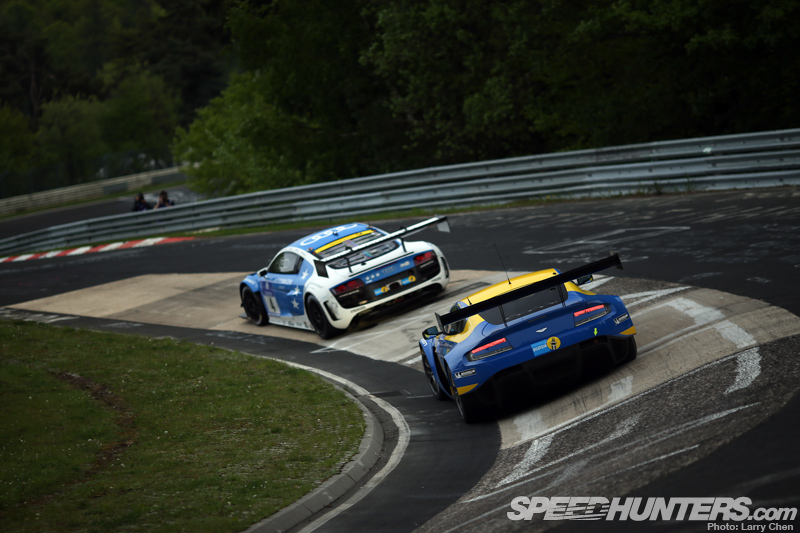
The number of entrants combined with the nature of the track meant constant action. We started with Audi in front, then the Aston Martin Vantage battled past to take the lead.
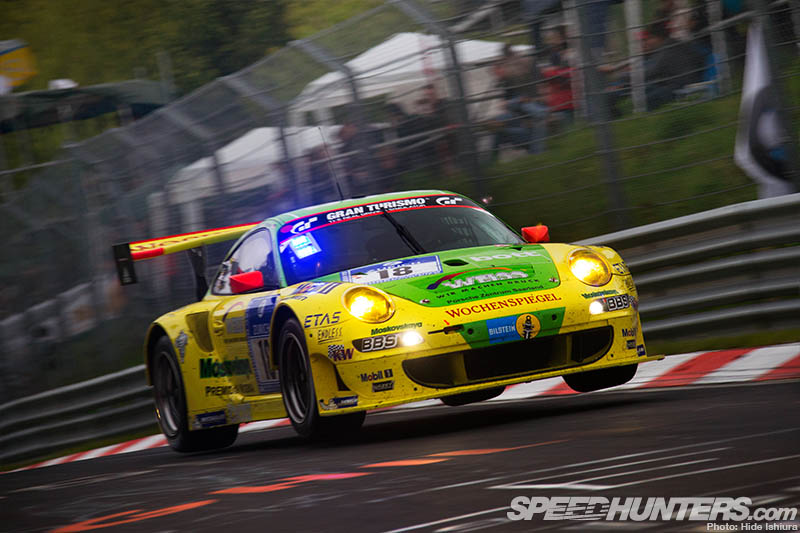
Then as the rain began to fall around 9pm, the legendary Manthey Porsche team used their local experience to time their stops perfectly, swapping to rain tyres just as the heavens opened, leapfrogging up the order and temporarily slotting into the first two positions. That put them at the sharp end, and there they stayed as the red flag flew, right up with the Aston Martin and Audis.
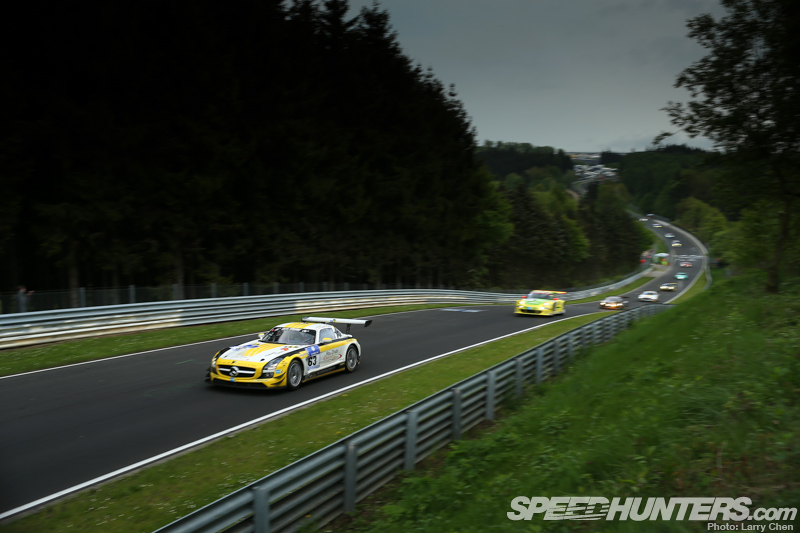
The Nürburging might be the longest track in the world that’s in regular operation, but it’s also surely one of the narrowest. The insane number of cars they allow on track at the same time to thread their way through the dense forest seems… well – ridiculous.
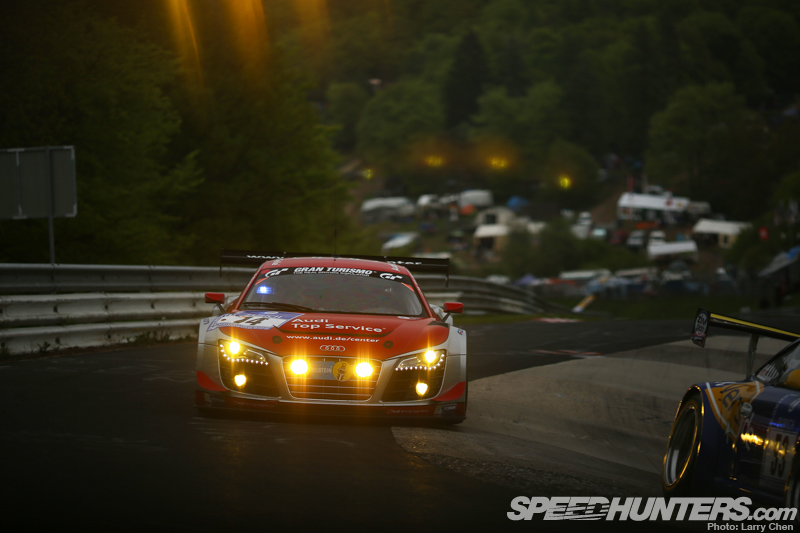
It’s raw. It’s relentless. But it’s amazing. It’s why we love it.
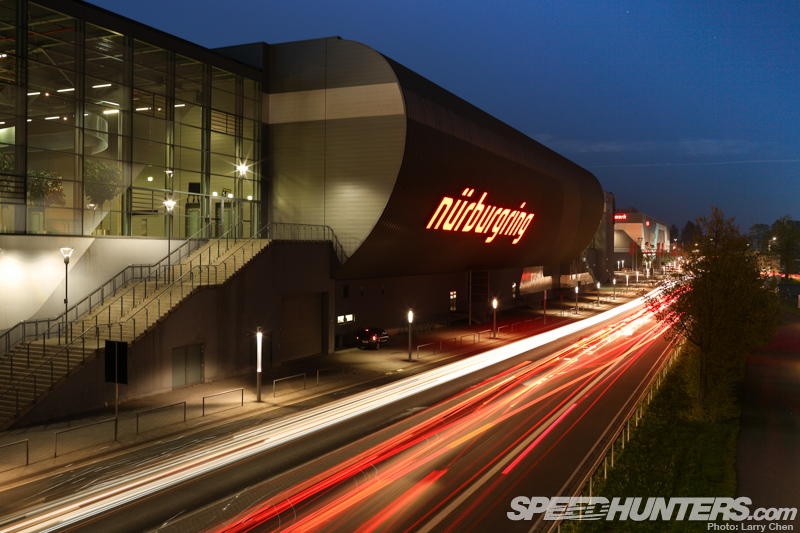
Everything about the Nürburgring 24 Hours is that little bit more edgy than anywhere else, and the race is the result of a recipe that’s ingredients are many and varied. There are the cars and track, sure, but the success of the event goes much deeper and wider. The Speedhunters team had been here for four days, with various levels of experience of the track amongst the three of us, and without exception we’ve fallen under the track’s spell.
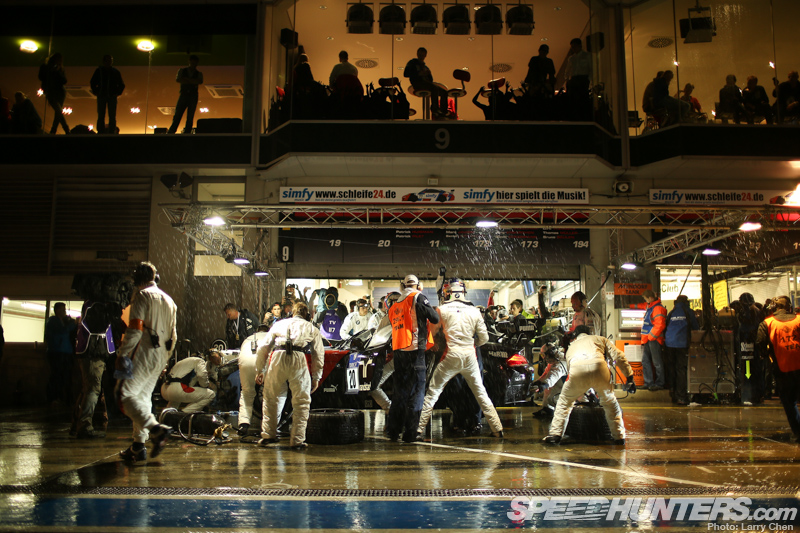
As the race paused, it seemed a good opportunity to take a look through the things what we had seen and experienced so far. Some of the elements that make this race so extraordinary and why a hundred thousand or more people turn up each year and flock to the forests around the track.
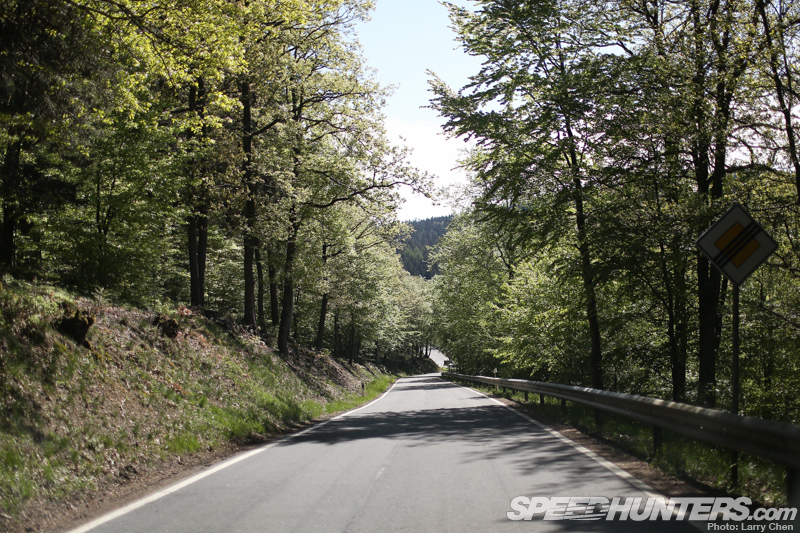
THE LOCATION
You know that the track is going to be something special as soon as you turn off the local highway. The public roads are simply breathtaking – tarmac veins spreading out over the rolling topology of the Eifel Mountains region the Nordschleife is draped over.
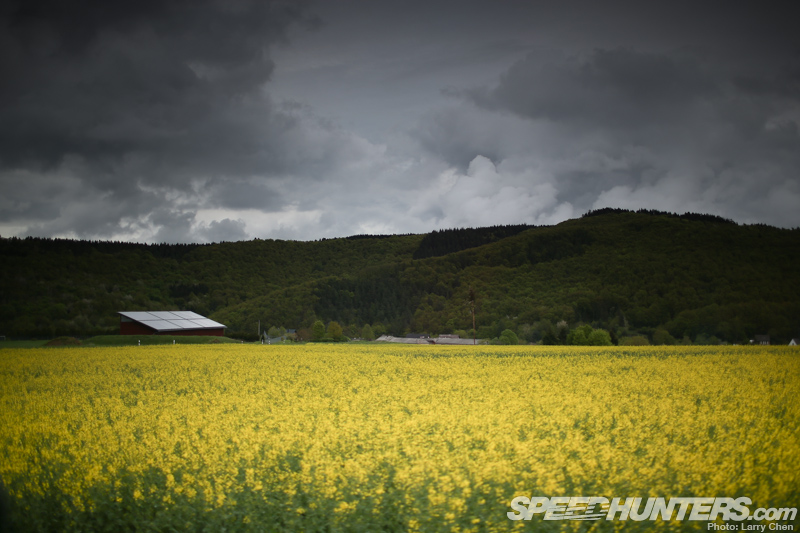
Turn down any road and an epic ride will inevitably entail, with beautiful backdrop to match. Sinuous routes along stunning ridges, daunting drops down through valleys with corkscrew hairpins and the trees enclosing the road on either side.
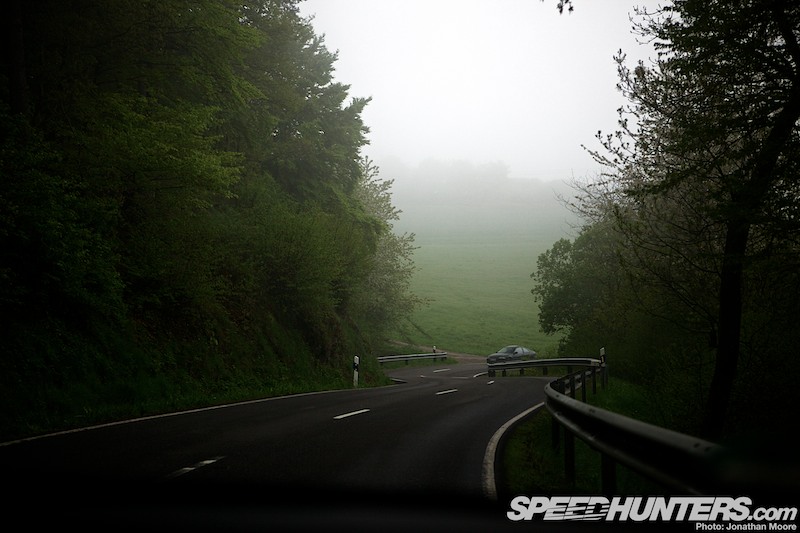
Unless the fog has rolled in, in which case you’ll be lucky to see the bend in front of you. Whatever the conditions, the final 20 minute run to the track was always completed with a huge smile. It was just a shame about the rental car quality – but probably for the best.

The surprising thing is how sensible most drivers are. The combination of the autobahns and easy access to the Nordschleife seem to keep unnecessary exuberance off the public roads and limited to more appropriate environments.
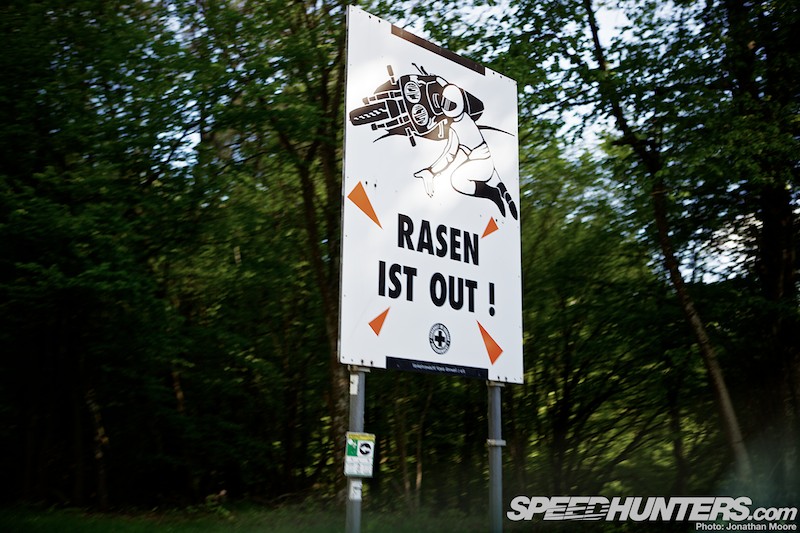
Road signs back up the message of keeping calm and carrying on sensibly, just in case – but you get the idea this might be more for visitors than locals.

How can you not like a place where the local gas station is also the best stocked model shop you’re ever likely to see. Dottinger Höhe would be an easy place to drop an awfully lot of money – and you’d need a hell of a lot of shelf space in return.
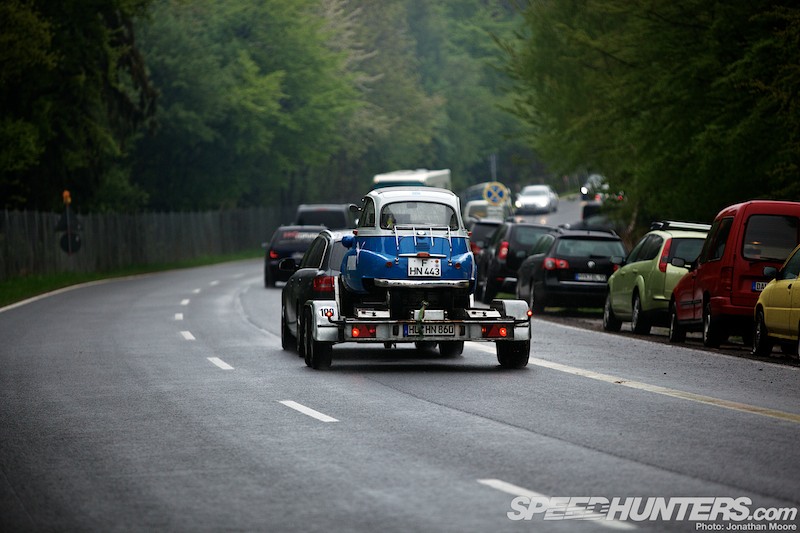
This is the amazing thing – the entire area is geared around the Nürburgring. It’s a big deal for what is quite a remote area, but it’s still surprising that the locals seem to be in general so supportive. Everywhere you go there are references to the ‘Ring: everything from stickers on the backs of trucks to the many track cars (of all shapes and sizes) being trailered around.
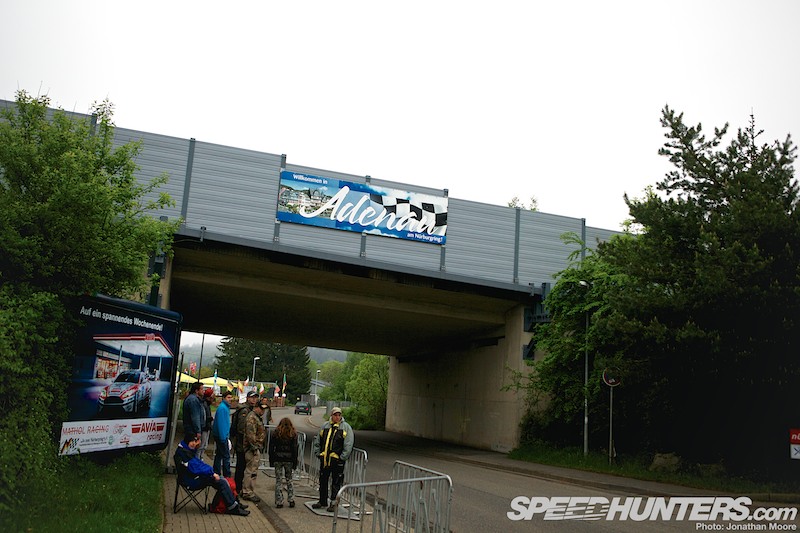
Then again, it’s probably difficult to get away from when the track cuts through your town over a bridge, as it does at Adenau.
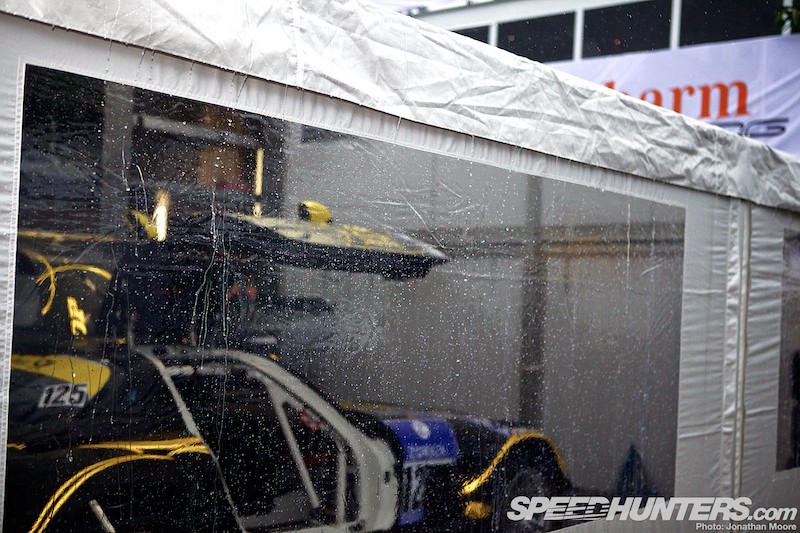
THE WEATHER
The Nürburgring has weather. By that, I mean it has all weather. Anything and everything, at any time. Or at the same time. So whatever your preferred weather condition, you’ll have it at some stage if you attend the N24. You could probably bring a pair of skis and get to use them (in fact, I did see a tent in the campsites with exactly that).
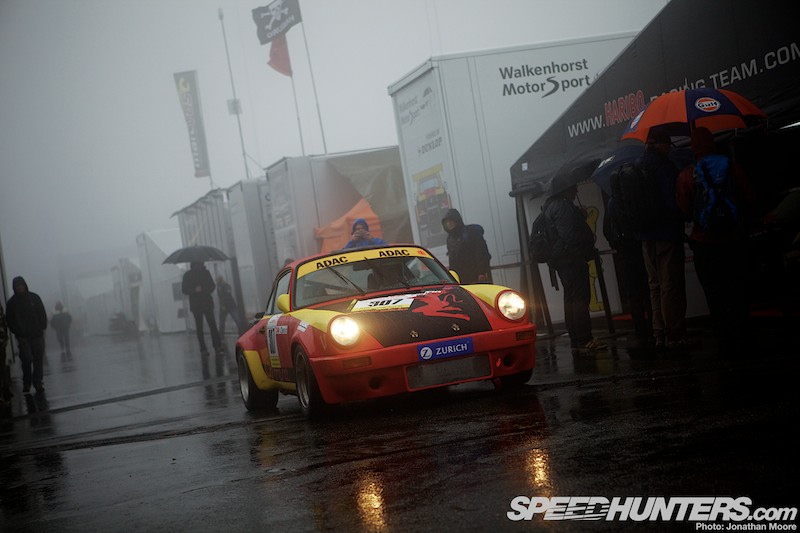
This year we’ve had the usual crazy weather concoction over the first couple of days: heavy fog that settled over the entire area, biblical rain storms and blazing sunshine.
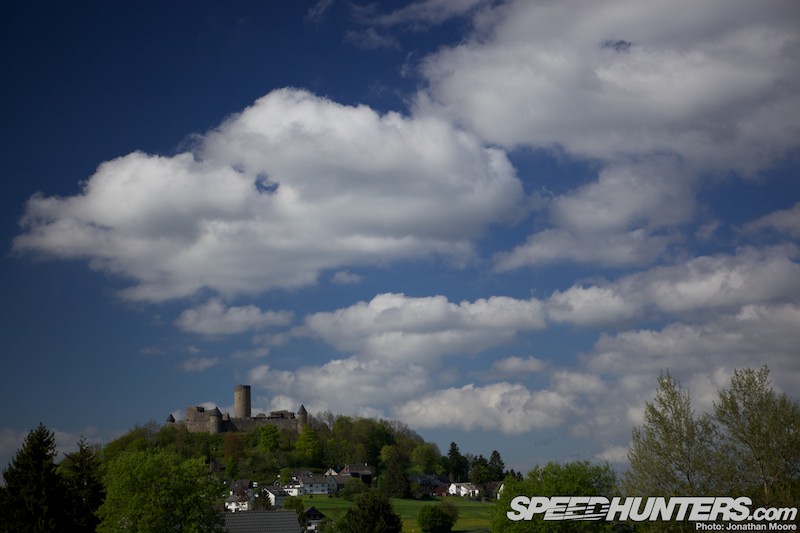
Soaked one minute, boiled the next. Welcome to the ‘Ringer.
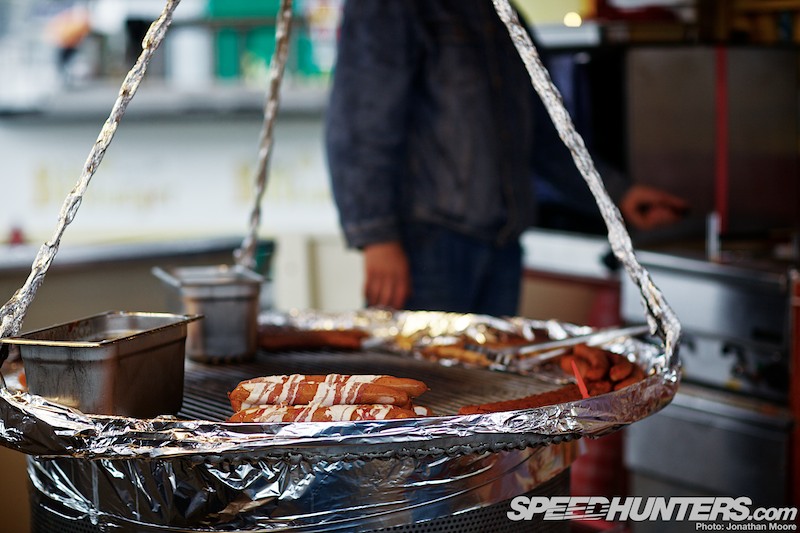
THE FOOD
Ah… food. It has to be said that there aren’t a lot of vegetarian or light salad options on offer at the many concessions dotted around the track. There are lots of sausages. Which is no bad thing. And they come in exciting varieties of large and larger.
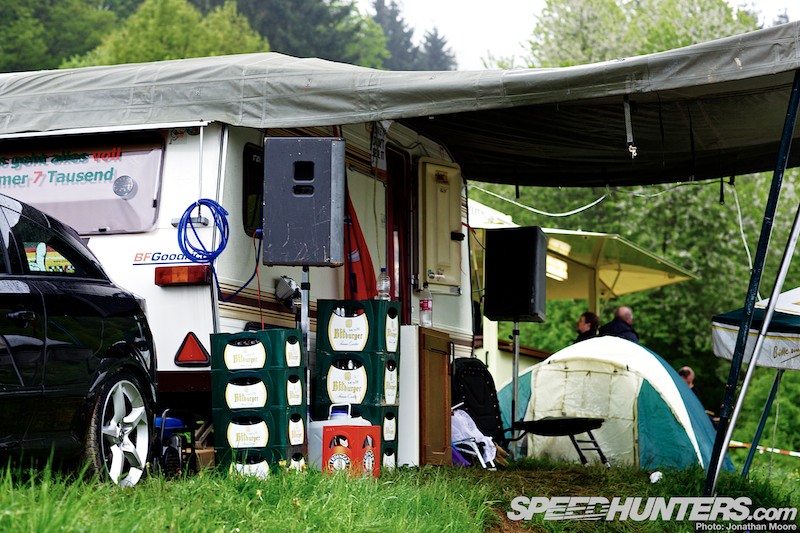
Similarly, alcohol is not something that’s in short supply..
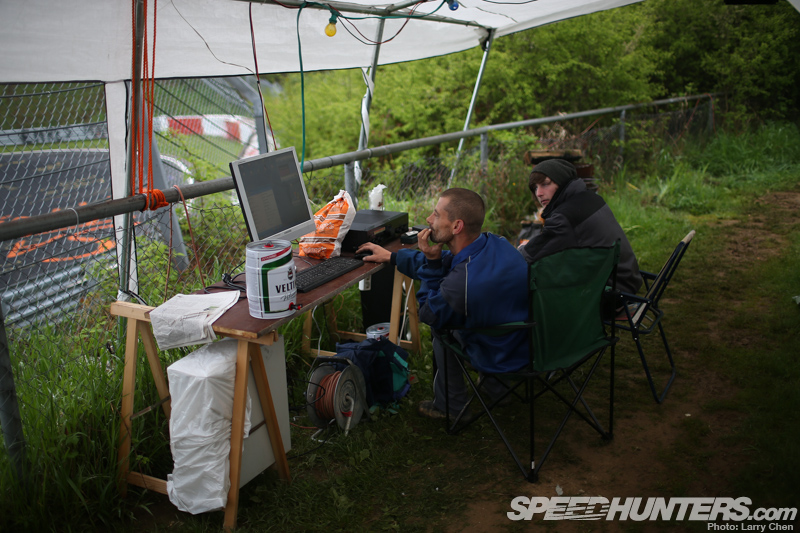
THE FANS
And to eat the sausages and drink the beer, you need spectators. And this is not a problem at the Nürburgring. We had a look at the campsites around Höhe Acht on our trek to the Karussell, but the thing to understand is that the same scene plays out around the majority of the Nordschleife.
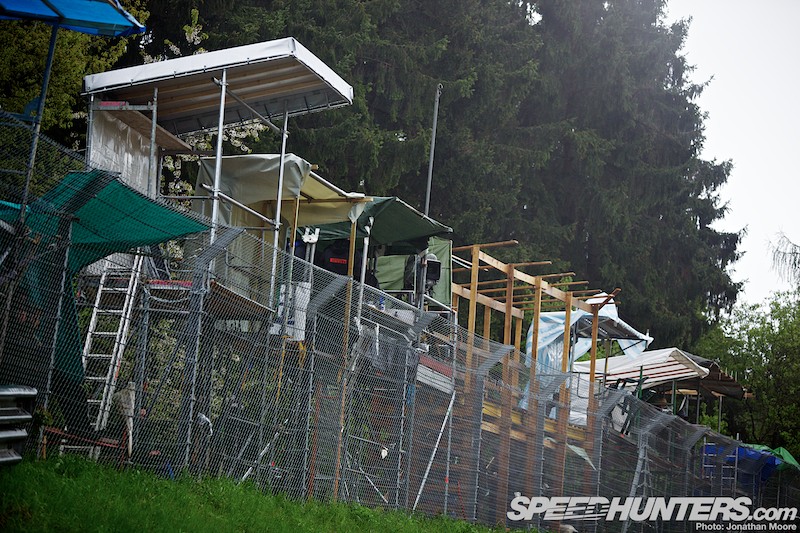
This point was rammed home during my trip round the track on board an Aston Martin. It seemed like an entire army division was camped out – the fences almost sagging under the lines of self-built grandstands and people pressed against them.
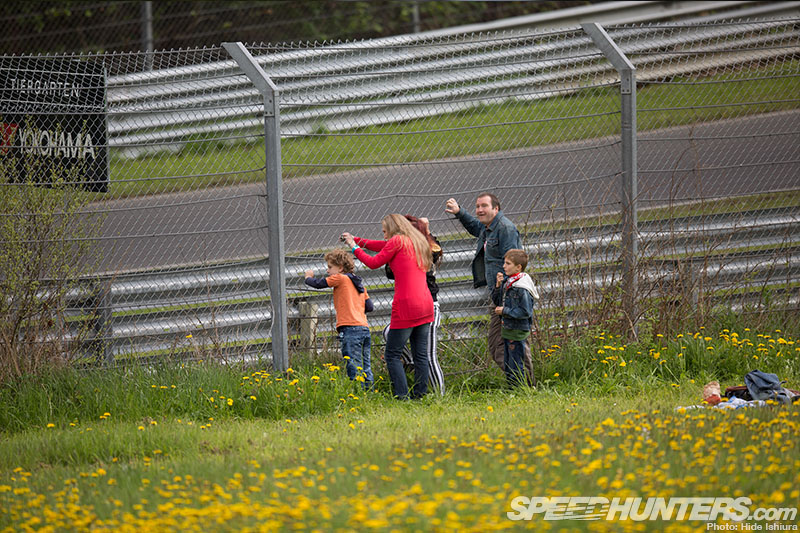
The N24 might involve a lot of manly beer drinking, but there are also plenty of families about: the next generation is already being reared on petrol fumes!
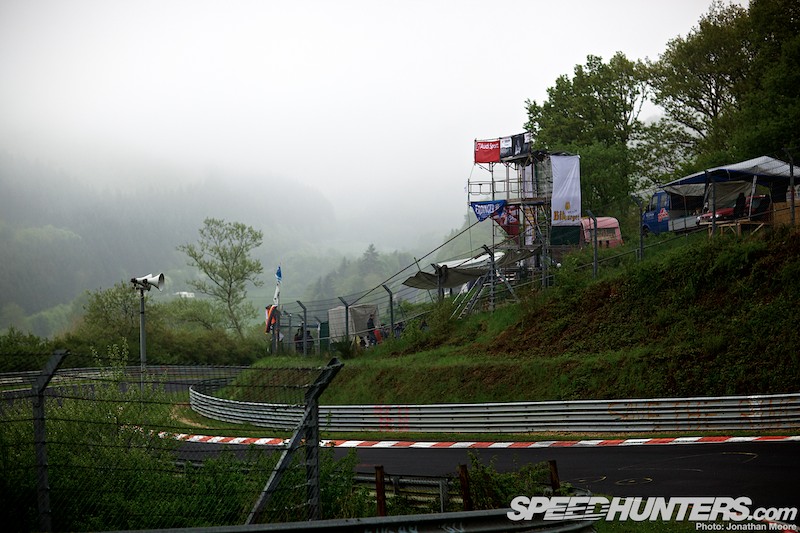
THE TRACK
The three big European 24-hour endurance races – Le Mans, Nürburgring and Spa – may have a shared theme in being famous 24-hour races, but they have very different characteristics. Le Mans is the mother of endurance races. Born in 1923 she’s the oldest of the family and is a stickler for tradition and formal organisation – though she has allowed herself a some nips and tucks over the years to keep things in shape and is now a high-speed 8.4-mile sprint. Her sister, Spa, is just a year younger and has had even more extreme surgery – she’s a fraction of her former size at just 4.3 miles.

The Nürburgring is their young punk offspring. She’s unapologetic in attitude – 15.7 miles of raw and unforgiving attitude. Aggression is the only approach if you want to succeed. Paddy took a look at the Nordschleife last year, and his story gives a fantastic overview of what makes the Nordschleife so impressive – and frightening – as a racing track.
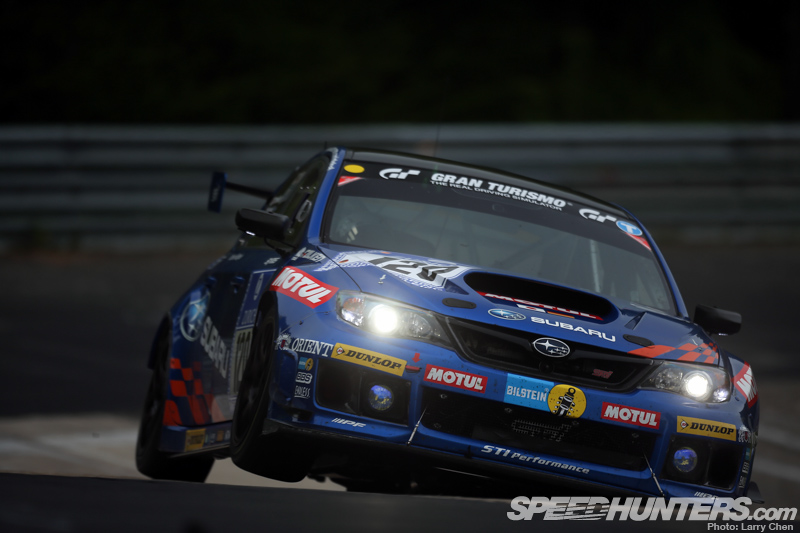
There have been no virtually no changes since 1970, except for the odd bit of resurfacing every so often of what was already there. The layout and infrastructure have almost no relevance to a modern race track once you head off the relative sterility of the Grand Prix track and the hook out into the forest and onto the Nordschleife. Marshals posts are like a chain of isolated border outposts; accidents have to be sorted out by neutralising the area under yellow and dispatching a recovery vehicle on the track itself.
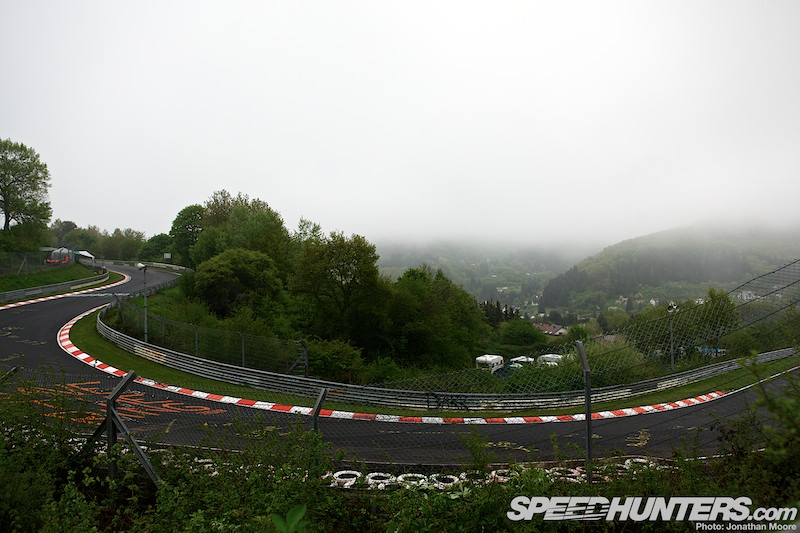
The scale of the place shouldn’t be seen as a drawback but as an opportunity. Like the drivers, who say you need years and hundreds of laps to learn the lines, as a spectator or photographer you can discover new locations every time you come. You could have a decade of N24s and still not claim to know the place back to front.

However, getting anywhere during the race does take an age. Send a photographer out into the boonies and they’ll likely reappear sometime during next year’s race. There are media shuttles and buses for spectators, but the traffic jams from both traffic and ‘happy’ fans throughout the race mean that movement on four wheels is slow going. So it’s easy to understand why as a spectator you would stake out a spot next to the track and stay there for the week, letting the race come to you.

THE CARS
There are some cars at the Nürburgring 24 Hours. A ridiculous number in fact. The types of car taking part are all over the place, but then nothing about the N24 is straightforward. Modern GT3 Z4 battles Lexus LFA GT prototype battles decade-old Viper battling decades old Merc 190. It’s a race that doesn’t make any sense outside a bizarre dream. But what a dream.

Every year there are surprises and you just never know what will turn up on the entry list. Sometimes it’s like a car has joined the race halfway through, prompting frequent cries along the lines of: ‘I didn’t know that car was even in the race!’ This year it was the Audi RS5 GT in the paddock…

… and then the Mercedes SLK out on track.
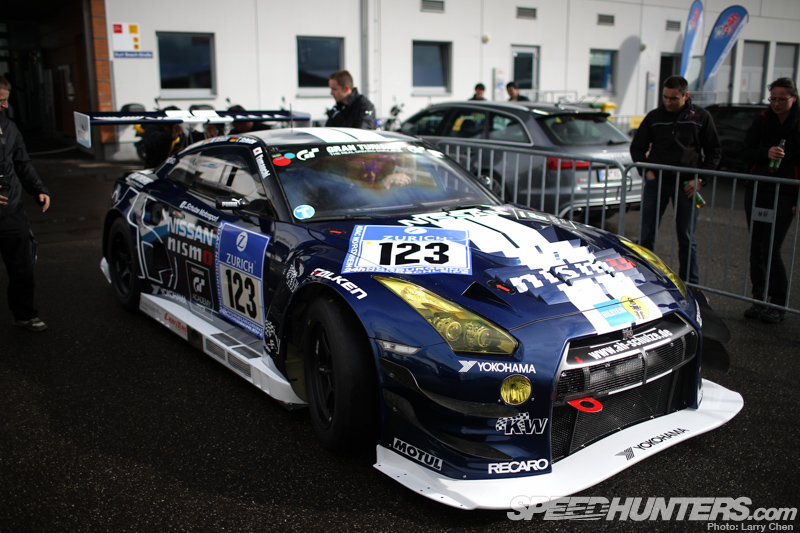
For all its renown in the world of the petrolhead, the N24 isn’t really a mainstream international event in the style of something like Le Mans. That said, several manufacturers have established bases at the ‘Ring, including Aston Martin and Nissan. Nissan moved up a gear for 2013, fielding a new R35 GT3 in the top class.
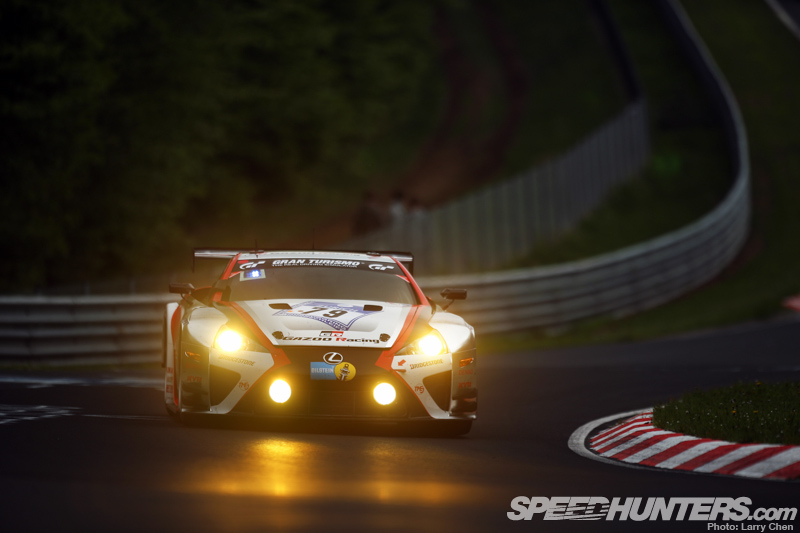
The Japanese passion for the race is particularly strong. This year Toyota brought along another update on its LFA – a prototype GTE-class car that up until now has never raced on the international stage.

Backing up the Lexus were nine GT86s. Nine!

Subaru also returned with its Impreza STI and an army of mechanics and press.
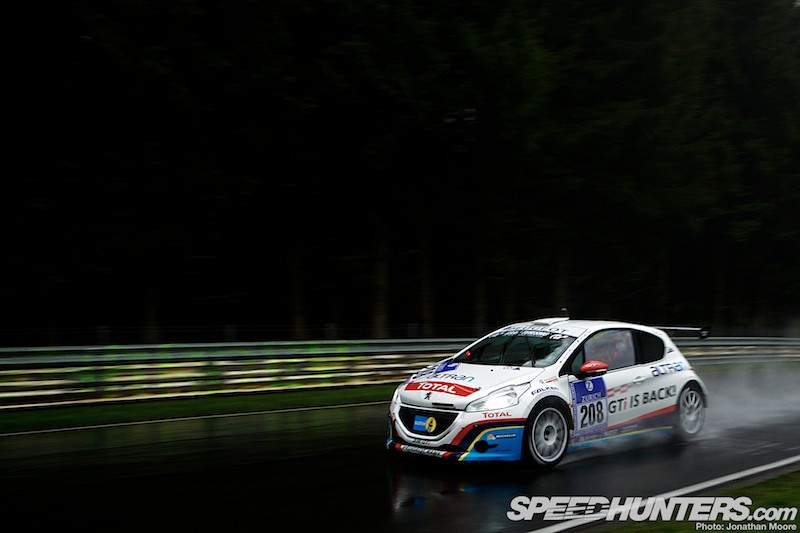
Peugeot has also been using the N24 to return to move its motorsport programme up a notch. Three new 208 GTIs were entered.

Even Hyundai has got in on the act with a Genesis Coupé and Veloster Turbo.
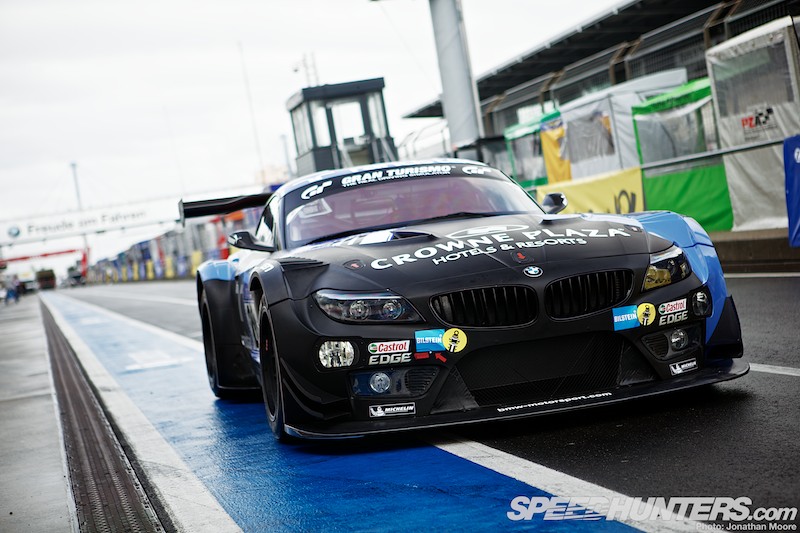
But the N24 remains proudly a German race, and rightly so. That individuality is guarded: not exclusively, but just enough so that it doesn’t lose any of its unique character. German manufacturers dominate, that’s for sure. BMW, Mercedes-Benz, Porsche and Audi all have their honour at stake when it comes to the big race.
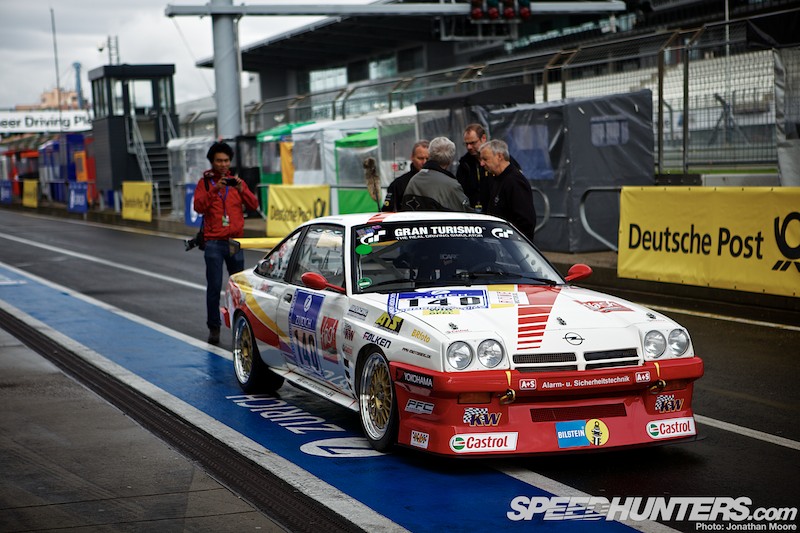
Then there are the wildcards. Entered by veteran teams who return year after year, like the Kissling Motorsport Opel Manta…
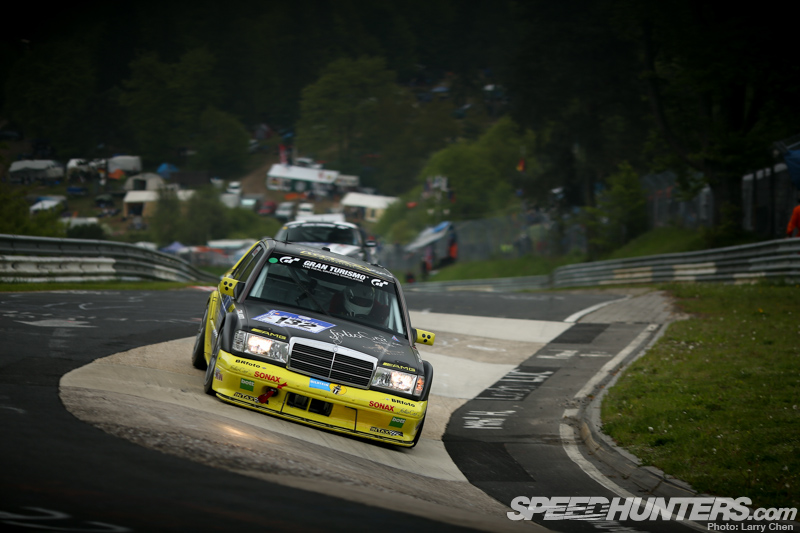
…and the Intax Mercedes 190E. Like the Monza, surely it had just escaped the Classic 24 paddock?

THE DRIVERS
The adoption of GT3 rules has brought the manufacturers flooding in with professional driver squads. But my favourite thing is the number of drivers using pseudonyms further down the grid. Often it’s guys who don’t want to make it too obvious to wives or families that they’re out risking their necks racing. For instance: ‘Morizo’, ‘Don Stephano’ and my personal favourite, ‘Tiger’.
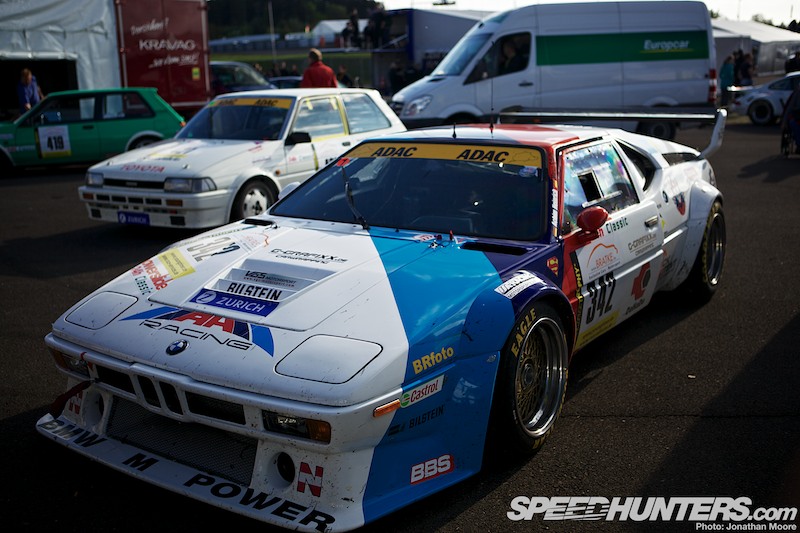
THE CLASSIC 24
And you thought there were a lot of cars in the main race… The Youngtimer field that supports the 24 Hours numbered some 200 this year, and included such vintage stars as a BMW M1 and Kremer Porsche K1.
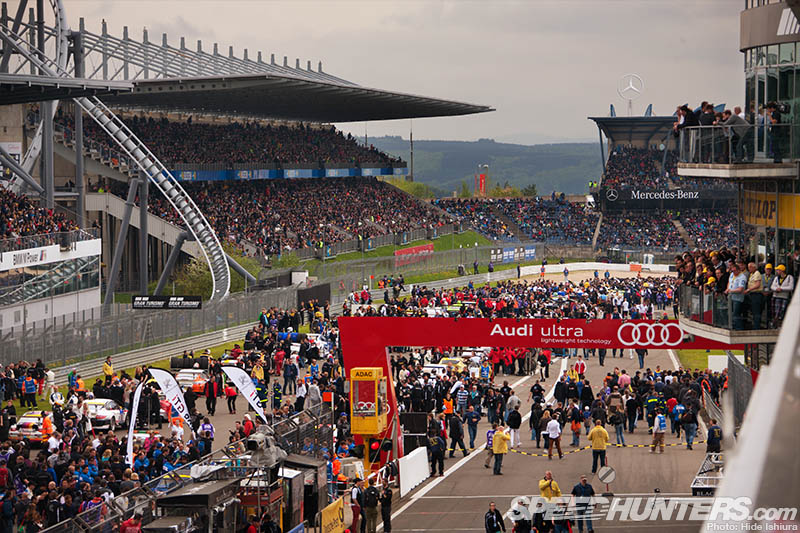
THE ROLLING STARTS
Somehow all the cars do actually initially line up on the start straight, though the regular painted position markers are totally redundant.

The entire length of the straight is used up, split into four packs, with the pole man right down by the first corner (literally on the edge of the braking zone), and the guy in last place right back by the final corner – all swamped by a sea of people.
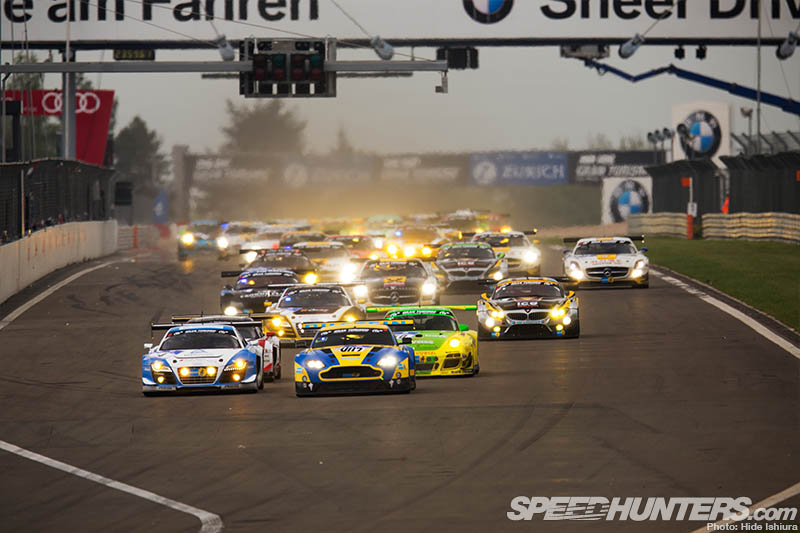
So onto what happens when the lights turn green: waves of cars coming at you.
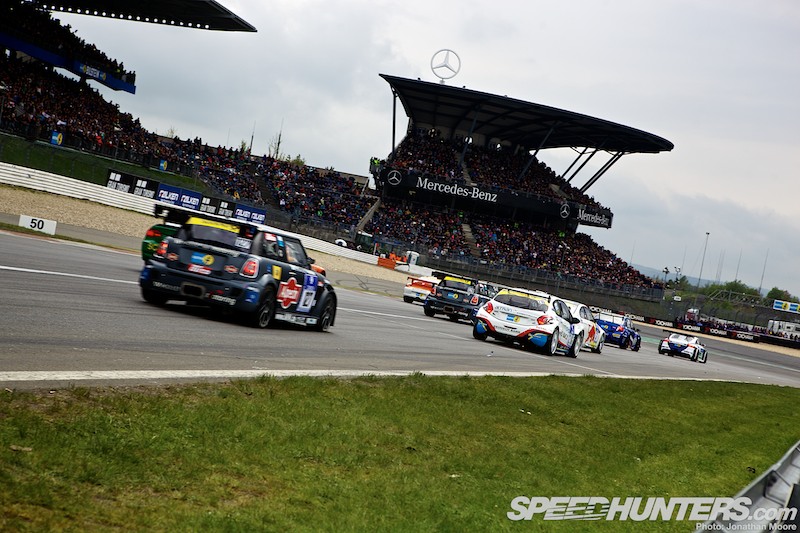
You get four starts for the price of one: the cheering from the upper level grandstands is usually the giveaway that another 40-odd cars were about to come hurtling at you.
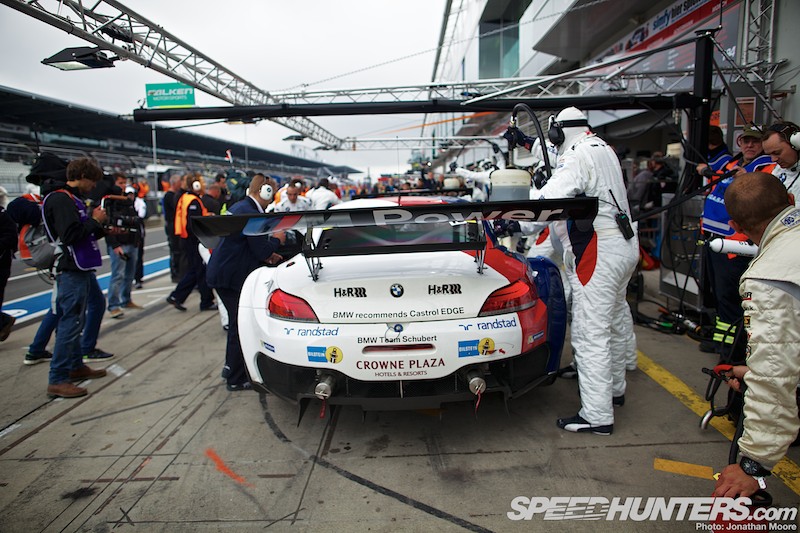
THE PITS
When I started writing this I had just got back to the press room after risking the pit-lane, which is one of the few things in motorsport that truly makes me nervous. Anyone not working for a team who isn’t nervous is probably not paying attention – and likely to be eating car before long. You have to be constantly on your guard as 176 cars try and operate out of a pit-lane built for a fraction of that.
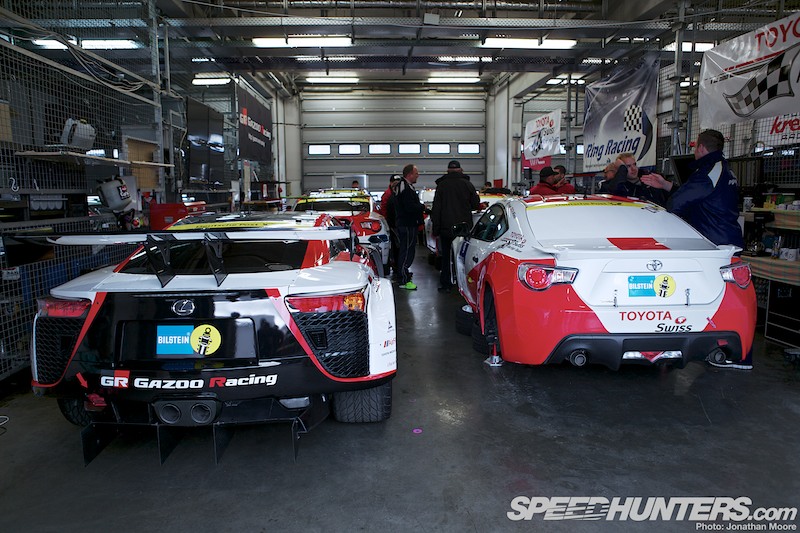
The garages are stacked three-deep and two-wide with cars, making for almost impossible operating conditions for the mechanics. Mighty manufacturers share space with humble privateer – no one gets a monopoly on square footage.
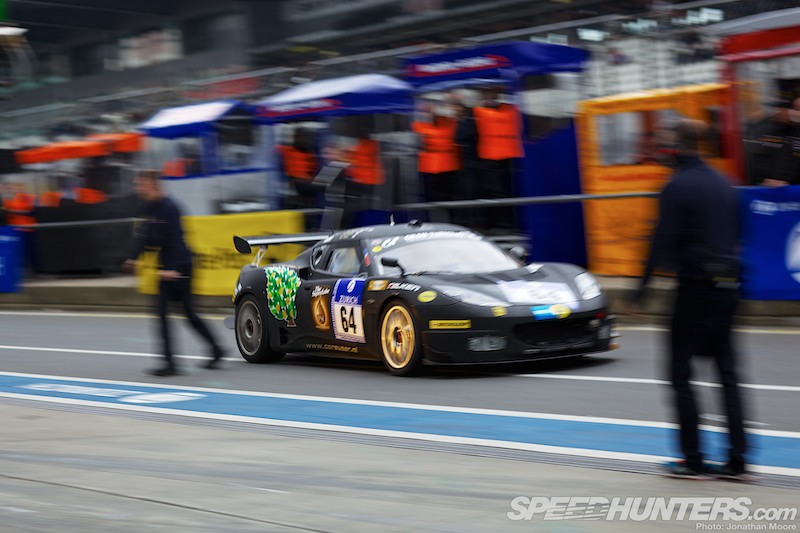
As cars roll in and out of the pits, there’s a sea of people milling about: mechanics, drivers, engineers, media, guests – it requires clear communications and proper etiquette to make it all work. Which it usually does. Just. Though even during just half an hour in the pit lane I saw several near misses of both cars and people.
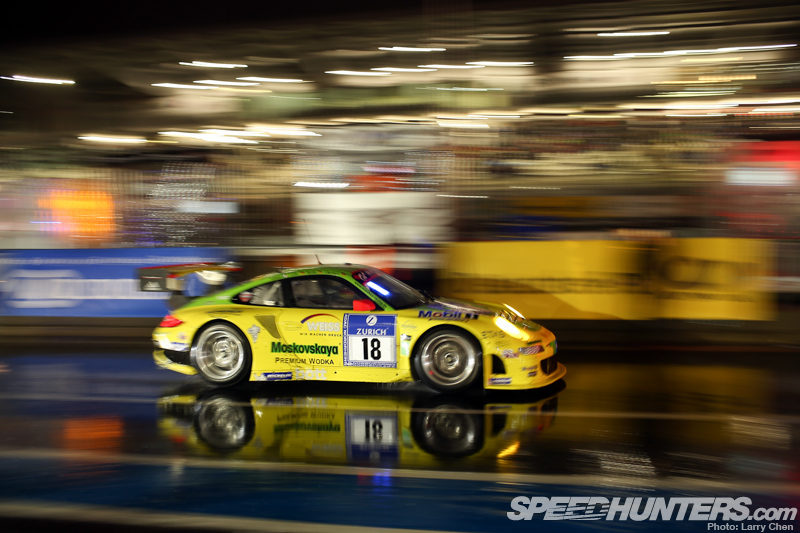
THE FIVE, NINE AND 10 HOURS OF NÜRBURGRING
From the outside world the race is in three parts. The first segment following the start is as you would expect and for 2013 it was a five hour GT race. But as night falls the blanket of the Nürburgring cloaks the track from the outside world. The cameras are locked off, the radio and TV coverage goes silent for nine hours or so and the only thing that keeps ticking along is the timing system linked to the cars’ transponders.
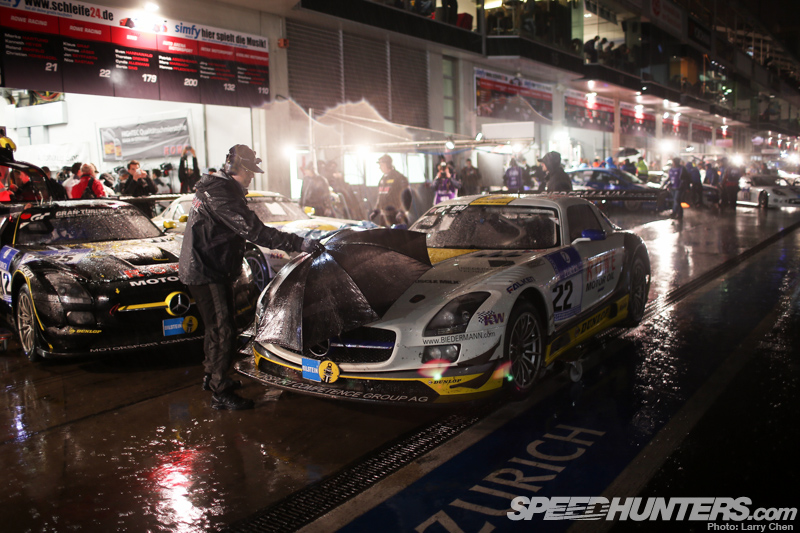
Survive the night, race in the day is the typical mantra. Though this year we’ll have no night portion, leaving just a 10-hour ‘sprint’ to the finish – though the rain is forecast to continue deep into tomorrow. Raw and relentless – like the race itself.
Words by Jonathan Moore
Instagram: speedhunters_jonathan
jonathan@dev.speedhunters.com
Photos by Larry Chen and Hide Ishiura
Speedhunters at the Nürburgring
The 2013 Nürburgring 24HR on Speedhunters
Live timing






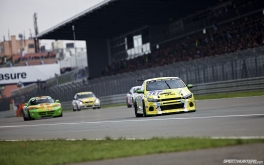
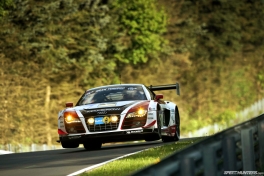
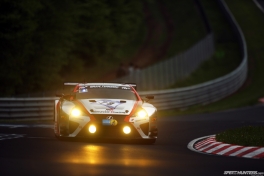
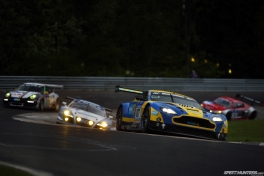
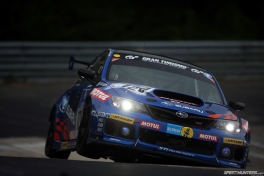

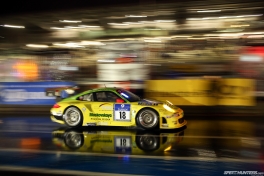
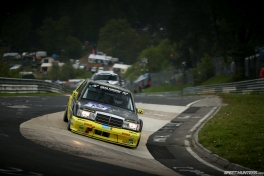





Epic
Epic
Epic